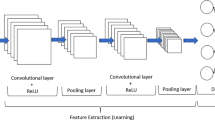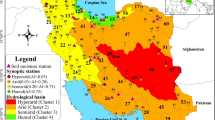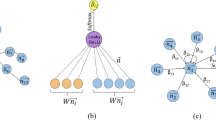Abstract
Hyperspectral images (HIs) are used in diverse disciplines, such as resource handling, land cover analysis, food science, anomaly detection, and precision agriculture. Researchers have been working on a number of visual processing and machine intelligence algorithms to handle this type of data as efficiently as feasible. Deep learning approaches have advanced significantly in the field of machine vision, which is also having a big impact on the analysis of hyperspectral data. To increase its discriminative potential for HI classification, this work suggests a powerful 3D-CNNs (Convolutional Neural Networks) architecture, where the shallow features extracted using 1D-EWT (Empirical Wavelet Transform) are served as input, and the ultimate output of the CNN are projected class-related outcomes. The framework is known as PEC, where P stands for PCA, E for 1D-EWT, and C for 3D-CNN model. Prior to features extraction, the HI undergoes spectral dimension reduction via Principal Component Anaalysis (PCA). To forecast segmentation for a volumetric area of a 3D HI sample, 3D CNNs use 3D convolutional kernels. The usage of more parameters by these CNNs means that the ability to employ interslice context that can boost performance. The CNN model’s parameters are optimised using a limited training set. The newly proposed PEC framework achieves a considerable overall accuracy of 99.58% and 99.94% (percentage increase of 0.08% and 0.54%) and Kappa score of 99.51% and 99.92 (percentage increase of 1.5% and 0.8%) compared to similar approaches for two real-world data sets IP and PU respectively with 30% training samples.








Similar content being viewed by others
Data availibility
Not applicable.
Code availability
Not applicable.
References
Alberg AJ, Park JW, Hager BW et al (2004) The use of “overall accuracy” to evaluate the validity of screening or diagnostic tests. J Gen Intern Med 19(5p1):460–465
Bai J, Xiang S, Shi L et al (2015) Semisupervised pair-wise band selection for hyperspectral images. IEEE J Select Topic Appl Earth Observ Remote Sens 8(6):2798–2813
Ben Hamida A, Benoit A, Lambert P et al (2018) 3-d deep learning approach for remote sensing image classification. IEEE Trans Geosci Remote Sens 56(8):4420–4434. https://doi.org/10.1109/TGRS.2018.2818945
Carvalho VR, Moraes MF, Braga AP et al (2020) Evaluating five different adaptive decomposition methods for eeg signal seizure detection and classification. Biomed Signal Proc Control 62(102):073. https://doi.org/10.1016/j.bspc.2020.102073
Chang CI, Du Q, Sun TL et al (1999) A joint band prioritization and band-decorrelation approach to band selection for hyperspectral image classification. IEEE Trans Geosci Remote Sens 37(6):2631–2641
Demir B, Ertürk S (2010) Empirical mode decomposition of hyperspectral images for support vector machine classification. IEEE Trans Geosci Remote Sens 48(11):4071–4084
Demir B, Erturk S (2008) Empirical mode decomposition pre-process for higher accuracy hyperspectral image classification. In: IGARSS 2008 - 2008 IEEE International Geoscience and Remote Sensing Symposium, pp II–939–II–941. https://doi.org/10.1109/IGARSS.2008.4779150
Druzhkov P, Kustikova V (2016) A survey of deep learning methods and software tools for image classification and object detection. Pattern Recognit Image Anal 26(1):9–15
Elgamal T, Hefeeda M (2015) Analysis of pca algorithms in distributed environments. arxiv: https://arxiv.org/abs/1503.05214
Ertürk A, Güllü MK, Ertürk S (2012) Hyperspectral image classification using empirical mode decomposition with spectral gradient enhancement. IEEE Trans Geosci Remote Sens 51(5):2787–2798
Fauvel M, Benediktsson JA, Chanussot J et al (2008) Spectral and spatial classification of hyperspectral data using svms and morphological profiles. IEEE Trans Geosci Remote Sens 46(11):3804–3814
Fırat H, Asker ME, Hanbay D (2022) Classification of hyperspectral remote sensing images using different dimension reduction methods with 3d/2d cnn. Remote Sens Appl Soc Environ 25(100):694. https://doi.org/10.1016/j.rsase.2022.100694
Fukushima K, Miyake S (1982) Neocognitron: A self-organizing neural network model for a mechanism of visual pattern recognition. In: Competition and cooperation in neural nets. Springer, Berlin, p 267–285
Fung T, LeDrew E (1988) For change detection using various accuracy. Photogramm Eng Remote Sens 54(10):1449–1454
Gilles J (2013) Empirical wavelet transform. IEEE Trans Signal Process 61(16):3999–4010
Gilles J, Tran G, Osher S (2014) 2d empirical transforms. wavelets, ridgelets, and curvelets revisited. SIAM J Imag Sci 7(1):157–186
Gormus ET, Canagarajah N, Achim A (2012) Dimensionality reduction of hyperspectral images using empirical mode decompositions and wavelets. IEEE J Select Topic Appl Earth Observ Remote Sens 5(6):1821–1830
Harsanyi JC, Chang CI (1994) Hyperspectral image classification and dimensionality reduction: An orthogonal subspace projection approach. IEEE Trans Geosci Remote Sens 32(4):779–785
He M, Li B, Chen H (2017) Multi-scale 3d deep convolutional neural network for hyperspectral image classification. In: 2017 IEEE International Conference on Image Processing (ICIP), pp 3904–3908. https://doi.org/10.1109/ICIP.2017.8297014
Hsu PH, Tseng YH, Gong P (2006) Spectral feature extraction of hyperspectral images using wavelet transform. Journal of Aerial Surveying and Telemetry 11(1):93–109 https://doi.org/10.6574/JPRS.2006.11(1).8
Pai-Hui Hsu , Yi-Hsing Tseng & Peng Gong (2002) Dimension Reduction of Hyperspectral Images for Classification Applications, Geographic Information Sciences, 8:1, 1-8, https://doi.org/10.1080/10824000209480567
Huang NE, Shen Z, Long SR et al (1998) The empirical mode decomposition and the hilbert spectrum for nonlinear and non-stationary time series analysis. Proc R Soc London Ser A Math Phys Eng Sci 454(1971):903–995
Immovilli F, Bellini A, Rubini R et al (2010) Diagnosis of bearing faults in induction machines by vibration or current signals: A critical comparison. IEEE Trans Indust Appl 46(4):1350–1359
Iosifidis A, Tefas A, Pitas I (2015) On the kernel extreme learning machine classifier. Pattern Recog Lett 54:11–17. https://doi.org/10.1016/j.patrec.2014.12.003
Jayapriya K, Jacob IJ, Darney PE (2020) Hyperspectral image classification using multi-task feature leverage with multi-variant deep learning. Earth Science Informatics 13:1093–1102
Ji S, Xu W, Yang M et al (2013) 3d convolutional neural networks for human action recognition. IEEE Trans Pattern Anal Mach Intell 35(1):221–231
Jonathon S (2014) A tutorial on principal component analysis. arxiv: http://arxiv.org/abs/1404.1100
Jonnadula H, Kumar LS, Panda GK et al (2020) Hyperspectral image classification bi-dimensional empirical mode decomposition and deep residual networks. In: 2020 International Conference on Artificial Intelligence and Signal Processing (AISP), pp 1–6. https://doi.org/10.1109/AISP48273.2020.9073241
Khan MJ, Khan HS, Yousaf A et al (2018) Modern trends in hyperspectral image analysis: A review. IEEE Access 6:14,118–14,129. https://doi.org/10.1109/ACCESS.2018.2812999
Kim Y (2014) Convolutional neural networks for sentence classification. Proceedings of the 2014 Conference on Empirical Methods in Natural Language Processing. https://doi.org/10.3115/v1/D14-1181
Krizhevsky A, Sutskever I, Hinton GE (2012) Imagenet classification with deep convolutional neural networks. In: Pereira F, Burges C, Bottou L, et al (eds) Advances in Neural Information Processing Systems, vol 25. Cur- ran Associates, Inc., https://proceedings.neurips.cc/paper/2012/file/c399862d3b9d6b76c8436e924a68c45b-Paper.pdf
Li W, Du Q (2014) Gabor-filtering-based nearest regularized subspace for hyperspectral image classification. IEEE J Sel Topic Appl Earth Observ Remote Sensing 7(4):1012–1022
Lopez-Gutierrez R, Rangel-Magdaleno J, Morales-Perez CJ et al (2022) Induction machine bearing fault detection using empirical wavelet transform. Shock Vibrat 2022:1–12. https://doi.org/10.1155/2022/6187912
Maji P, Mullins R (2018) On the reduction of computational complexity of deep convolutional neural networks. Entropy (Basel) 20(4):305
Makantasis K, Karantzalos K, Doulamis A et al (2015) Deep supervised learning for hyperspectral data classification through convolutional neural networks. In: 2015 IEEE International Geoscience and Remote Sensing Symposium (IGARSS), pp 4959–4962. https://doi.org/10.1109/IGARSS.2015.7326945
Mallat S (1999) A wavelet tour of signal processing. Elsevier, Amsterdam https://doi.org/10.1016/B978-0-12-374370-1.X0001–8
Milyaev S, Laptev I (2017) Towards reliable object detection in noisy images. Pattern Recognit Image Anal 27(4):713–722
Mohapatra S, Kumar Pati G, Mishra M et al (2022) Gastrointestinal abnormality detection and classification using empirical wavelet transform and deep convolutional neural network from endoscopic images. Ain Shams Eng J :101942. https://doi.org/10.1016/j.asej.2022.101942,
Paoletti M, Haut J, Plaza J et al (2019) Deep learning classifiers for hyperspectral imaging: A review. ISPRS J Photogram Remote Sens 158:279–317. https://doi.org/10.1016/j.isprsjprs.2019.09.006
Papakostas M, Giannakopoulos T, Makedon F et al (2016) Short-term recognition of human activities using convolutional neural networks. In: 2016 12th International Conference on Signal-Image Technology & Internet-Based Systems (SITIS), pp 302–307. https://doi.org/10.1109/SITIS.2016.56
Pedregosa F, Varoquaux G, Gramfort A et al (2011) Scikit-learn: Machine learning in python. J Mach Learn Res 12:2825–2830
Pesaresi M, Gerhardinger A, Kayitakire F (2008) A robust built-up area presence index by anisotropic rotation-invariant textural measure. IEEE J Select Topic Appl Earth Observ Remote Sens 1(3):180–192
Pittner S, Kamarthi S (1999) Feature extraction from wavelet coefficients for pattern recognition tasks. IEEE Trans Pattern Anal Mach Intell 21(1):83–88. https://doi.org/10.1109/34.745739
Prabhakar TN, Geetha P (2017) Two-dimensional empirical wavelet transform based supervised hyperspectral image classification. ISPRS J Photogramm Remote Sens 133:37–45. https://doi.org/10.1016/j.isprsjprs.2017.09.003
Rajan S, Ghosh J, Crawford MM (2008) An active learning approach to hyperspectral data classification. IEEE Trans Geosci Remote Sens 46(4):1231–1242
Ranjan R, Sankaranarayanan S, Bansal A et al (2018) Deep learning for understanding faces: Machines may be just as good, or better, than humans. IEEE Signal Proc Mag 35(1):66–83
Roy SK, Krishna G, Dubey SR et al (2020) Hybridsn: Exploring 3-d-2-d cnn feature hierarchy for hyperspectral image classification. IEEE Geosci Remote Sens Lett 17(2):277–281. https://doi.org/10.1109/LGRS.2019.2918719
Sandeep Kumar L, Panda G, Dash R et al (2022) A novel grey wolf optimisation based cnn classifier for hyperspectral image classification. Multimed Tools Appl 81:1–24. https://doi.org/10.1007/s11042-022-12628-2
Sun Y, Wang X, Tang X (2014) Deep learning face representation from predicting 10,000 classes. In: Proceedings of the IEEE conference on computer vision and pattern recognition, pp 1891–1898
Tan SY (2017) Developments in Hyperspectral Sensing, Springer International Publishing, Cham, pp 1137–1157. https://doi.org/10.1007/978-3-319-23386-4_101
Tan K, Li E, Du Q et al (2013) Hyperspectral image classification using band selection and morphological profiles. IEEE J Select Topic Appl Earth Observ Remote Sens 7(1):40–48
Wang T, Liang M, Li J et al (2014) Rolling element bearing fault diagnosis via fault characteristic order (fco) analysis. Mech Syst Signal Proc 45(1):139–153
www.thekerneltrip.com (2018) Computational complexity of machine learning algorithms. https://www.thekerneltrip.com/machine/learning/computational-complexity-learning-algorithms/. Online Accessed 9 Sep 2022
Xu Y, Du B, Zhang F et al (2018) Hyperspectral image classification via a random patches network. ISPRS J Photogram Remote Sens 142:344–357
Yudistira N (2017) Kurita T (2017) Gated spatio and temporal convolutional neural network for activity recognition: towards gated multimodal deep learning. EURASIP J Image Vid Proc 1:1–12
Zhong Z, Li J, Luo Z et al (2018) Spectral-spatial residual network for hyperspectral image classification: A 3-d deep learning framework. IEEE Trans Geosci Remote Sens 56(2):847–858. https://doi.org/10.1109/TGRS.2017.2755542
Zhou X, Gong W, Fu W et al (2017) Application of deep learning in object detection. In: 2017 IEEE/ACIS 16th International Conference on Computer and Information Science (ICIS), pp 631–634 https://doi.org/10.1109/ICIS.2017.7960069
Zhu C, Yang X (1998) Study of remote sensing image texture analysis and classification using wavelet. Int J Remote Sens 19(16):3197–3203
Funding
Not applicable.
Author information
Authors and Affiliations
Contributions
Sandeep Kumar Ladi: Conceptualization, Writing - Original Draft, Software, Validation, Formal analysis, Investigation . G K Panda: Project administration, Supervision, Validation, Writing - Review & Editing. Ratnakar Dash: Conceptualization, Methodology, Supervision, Writing - Review & Editing. Pradeep Kumar Ladi: Conceptualization, Software, Python coding and debugging, Resources, Writing - Original Draft, Visualization. All the authors have contributed equally to this work.
Corresponding author
Ethics declarations
Conflicts of interest
The authors declare that they have no known competing financial interests or personal relationships that could have appeared to influence the work reported in this paper.
Ethics approval
The authors ensure that accepted principles of ethical and professional conduct have been followed.
Consent to participate
Not applicable.
Consent for publication
Not applicable.
Additional information
Communicated by H. Babaie.
Publisher’s note
Springer Nature remains neutral with regard to jurisdictional claims in published maps and institutional affiliations.
G K Panda, Ratnakar Dash and Pradeep Kumar Ladi are contributed equally to this work.
Rights and permissions
Springer Nature or its licensor (e.g. a society or other partner) holds exclusive rights to this article under a publishing agreement with the author(s) or other rightsholder(s); author self-archiving of the accepted manuscript version of this article is solely governed by the terms of such publishing agreement and applicable law.
About this article
Cite this article
Ladi, S.K., Panda, G.K., Dash, R. et al. A novel strategy for classifying spectral-spatial shallow and deep hyperspectral image features using 1D-EWT and 3D-CNN. Earth Sci Inform 15, 2289–2301 (2022). https://doi.org/10.1007/s12145-022-00879-4
Received:
Accepted:
Published:
Issue Date:
DOI: https://doi.org/10.1007/s12145-022-00879-4




